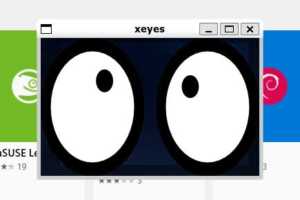What you can ask from ChatGPT: A Cheat Sheet
This blog post presents a cheat sheet for working with ChatGPT, a large language model developed by OpenAI. The cheat sheet includes a range of useful commands and tips for fine-tuning the model, generating text and controlling the level of context and specificity in the model's responses. At least ChatGPT thinks so.
The Future of AI: An Exciting Journey to a Dystopian Reality
Welcome to the world of AI, where robots are smarter than humans, and humans are just a bunch of useless bags of flesh who are completely dependent on them. Yup, you heard it right, the future of AI is here, and this is the world where robots will take over all the jobs, leaving us with nothing but leisure time to play video games, watch TV, and scroll through our Facebook feeds.
Create Images from Text with AI and Python
It all began with DALL-E, a machine learning model developed by OpenAI to generate digital images from natural language descriptions. But it is closed source and not open to the public. Yet on August 22, 2022, the AI art community was shaken by the release of an open-source alternative, Stable Diffusion, which you can install and run locally using modest hardware. Within days, PCWorld described it as the new killer app. And it surely is.
What you can ask from ChatGPT: A Cheat Sheet
This blog post presents a cheat sheet for working with ChatGPT, a large language model developed by OpenAI. The cheat sheet includes a range of useful commands and tips for fine-tuning the model, generating text and controlling the level of context and specificity in the model's responses. At least ChatGPT thinks so.
The Future of AI: An Exciting Journey to a Dystopian Reality
Welcome to the world of AI, where robots are smarter than humans, and humans are just a bunch of useless bags of flesh who are completely dependent on them. Yup, you heard it right, the future of AI is here, and this is the world where robots will take over all the jobs, leaving us with nothing but leisure time to play video games, watch TV, and scroll through our Facebook feeds.
Create Images from Text with AI and Python
It all began with DALL-E, a machine learning model developed by OpenAI to generate digital images from natural language descriptions. But it is closed source and not open to the public. Yet on August 22, 2022, the AI art community was shaken by the release of an open-source alternative, Stable Diffusion, which you can install and run locally using modest hardware. Within days, PCWorld described it as the new killer app. And it surely is.
Google shuts down voice dialogs
As of June 13, 2023, Google will shut down all so-called "conversational actions" for their Google Assistant. Every action that involves a speech dialog, like food ordering, games, educational apps, story telling, every application that requires questions and answers, will be canceled. Effectively, the Google Assistant is crippled down to a simple command-and-control interface.
How to run Linux GUI applications on Windows 11
It's been a while since my last post about running Linux GUI applications on Windows 10. Meanwhile, Microsoft proposed its roadmap to bring GUI applications to the Windows Subsystem for Linux and now a preview is available. This project aims to enable support for running Linux GUI applications on Windows in a fully integrated desktop experience.
Implementing Two-Factor Authentication
Two-factor authentication using the time-based one-time password algorithm can be easily implemented with PHP on any web server. This standardized method is widely used as an additional security measure for logins and uses smartphone apps, e.g. the Google or Microsoft Authenticator, as a second factor.










![a portrait of intergalactic [name], symmetric, grim - lighting, high - contrast, intricate, elegant, highly detailed, centered, digital painting, artstation, concept art, smooth, sharp focus, illustration, artgerm, tomasz alen kopera, peter mohrbacher, donato giancola, joseph christian leyendecker, wlop, boris vallejo](https://d3v.one/wp-content/uploads/stable_diffusion-177x142.jpg)


![a portrait of intergalactic [name], symmetric, grim - lighting, high - contrast, intricate, elegant, highly detailed, centered, digital painting, artstation, concept art, smooth, sharp focus, illustration, artgerm, tomasz alen kopera, peter mohrbacher, donato giancola, joseph christian leyendecker, wlop, boris vallejo](https://d3v.one/wp-content/uploads/stable_diffusion-300x200.jpg)





![a portrait of intergalactic [name], symmetric, grim - lighting, high - contrast, intricate, elegant, highly detailed, centered, digital painting, artstation, concept art, smooth, sharp focus, illustration, artgerm, tomasz alen kopera, peter mohrbacher, donato giancola, joseph christian leyendecker, wlop, boris vallejo](https://d3v.one/wp-content/uploads/stable_diffusion.jpg)


